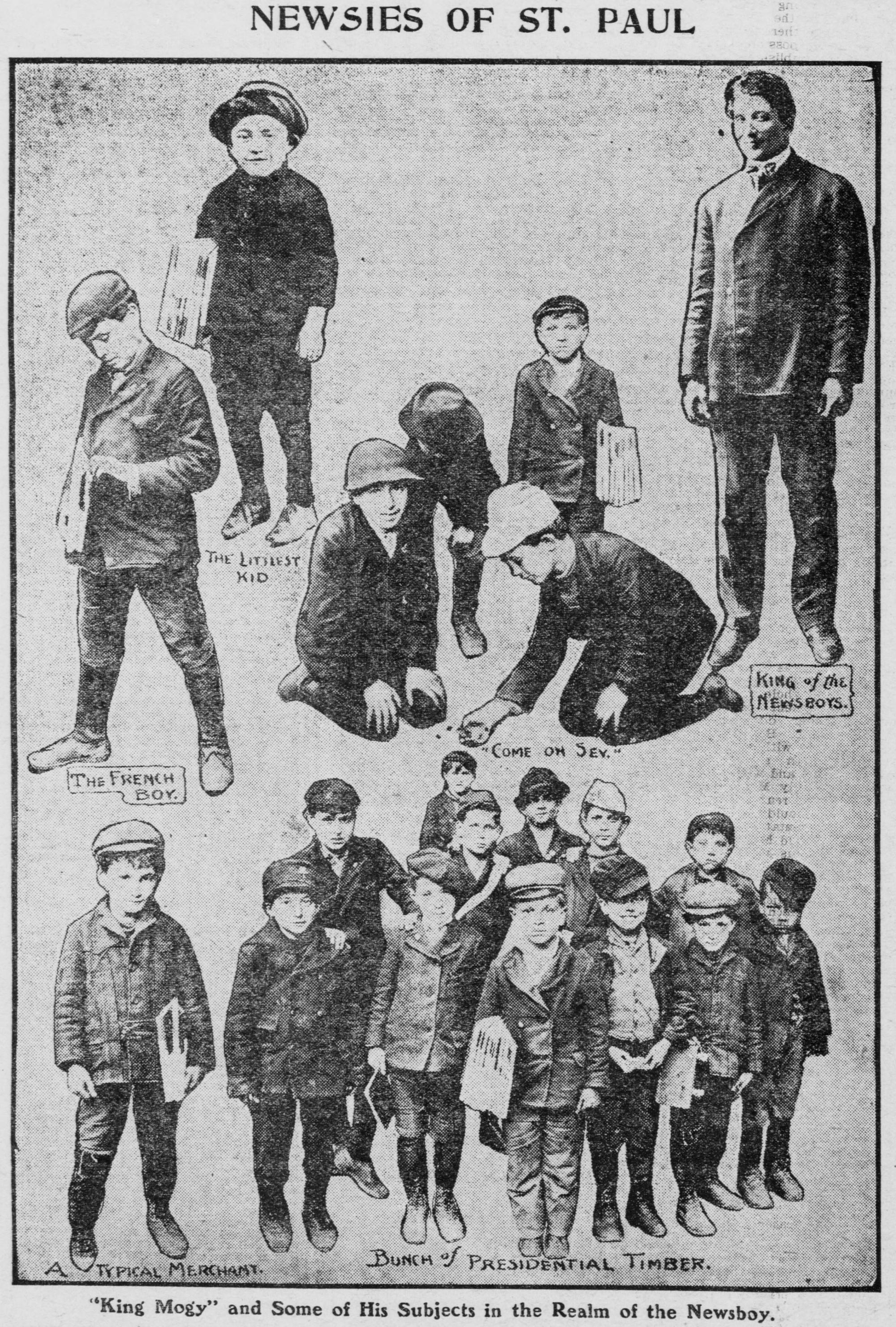Created by Colin Schroyer on Mon, 05/06/2024 - 09:57
Description:
During the hustle and bustle of the approaching 20th century, newsboys were responsible for distributing and selling newspapers across cities for a cut of the profit. However, prices to initially purchase newspapers to re-sell were astronomical, resulting in many boys nationwide unable to make money for themselves and their families. This was at a time in American history when child labor was still common practice. Though it would eventually be mitigated and abolished, the concern for the time was fair compensation and safety for their work.
In order to achieve the compensation, around the turn of the century newsboys went on strike, refusing to sell papers and essentially cutting off all income to the newspaper companies. Zinn Education Project summarizes the first strike that served as the catalyst for the nationwide movement: "The... New York newsboy strike of 1899 started on July 18 when newsies in Long Island City, Queens, caught the Evening Journal deliveryman selling them short bundles. They tipped over his wagon, chased him up the street, and triumphantly carried off armloads of papers, inspiring what nearly became a children’s general strike. Over the next two weeks boys... refused to sell William Randolph Hearst’s Evening Journal and Joseph Pulitzer’s New York World, the two largest circulation newspapers in the nation. Their actions emboldened newsboys... to stop work and demand better terms from their own bosses" ("July 18, 1899"). Though it took time, these strikes did work, as newsboys across America fought for fair wages. Several decades later, these events would go on to inspire the movie musical Newsies, directed by Kenny Ortega, which would go on to be adapted for the stage in 2011, where it would go on to have a Broadway run in 2012.
Newsies, through fictionalized characters, retells the story of the newsboys strike as these characters stop working for Joseph Pulitzer and band together to earn and protect their rights. The musical, through song, conveys the struggle these children went through; in the stage version of "King of New York," they sing, "We was sunk, pale, and pitiful / Bunch'a wet noodles / Pulitzer's poodles! / Almost about to drown in the drink" (Newsies: The Musical). The children, in the song, sing about how - now that they are fighting back against Pulitzer - are going to have a change to eat, to live a life of comfort, and to climb the social and economic ladder, which were all things they couldn't under Pulitzer's original payroll.
To gain an idea of what sort of kids really went on strike, Mogy Bernstein's photograph "The Newsies of St. Paul" shows just a small handful of the newsboys that went on strike. The picture was taken during the height of these strikes for fair wages for children. The fictionalized recount of the strike in Newsies showcases just how much effort went into shaping the future of children's work through fair wages, which would pave the way for further child protection laws. This progress has ensured that children are allowed to grow and flourish for years to come.
Works Cited:
Bernstein, Mogy. "The Newsies of St. Paul." The Saint Paul Globe, Chronicling America: Historic American Newspapers, 17 May 1903. Library of Congress, https://guides.loc.gov/chronicling-america-newsies.
"July 18, 1899: Newsboys Strike in New York." Zinn Education Project, https://www.zinnedproject.org/news/tdih/newsboys-strike. Accessed 6 May 2024.
Newsies. Directed by Kenny Ortega, Walt Disney Pictures, 1992. Disney+, https://www.disneyplus.com/browse/entity-24c3b1e7-41a1-405e-983d-49ccbdd.... Accessed 5 May, 2024.
Newsies: The Musical. Book by Harvey Fierstein, 2011. Disney+, https://www.disneyplus.com/browse/entity-8bba8f73-9a06-4594-9a97-433371e.... Accessed 6 May, 2024.
Copyright:
Associated Place(s)
Part of Group:
Featured in Exhibit:
Artist:
- Mogy Bernstein


